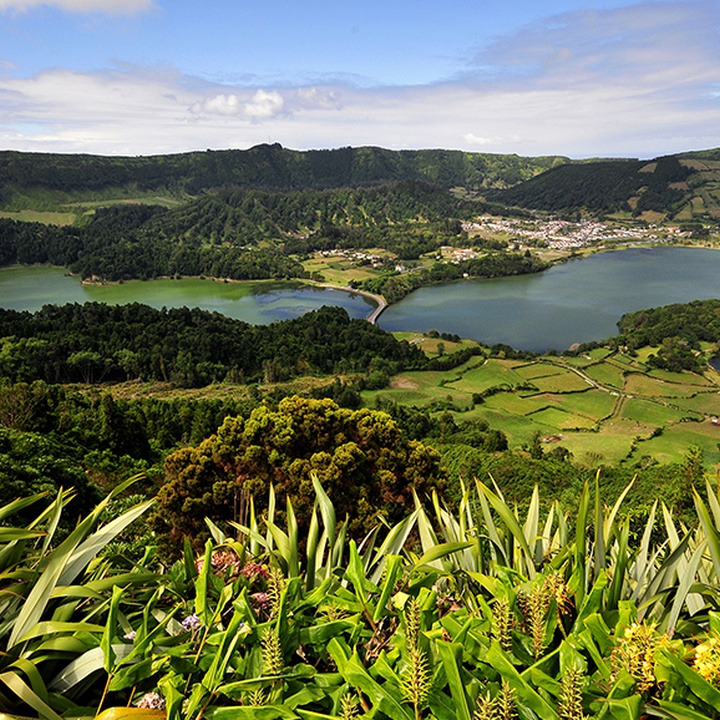Text size:
Geodiversity


The formation of São Miguel Island, as we know it today, was a phased process that began about four million years ago, with the emergence of the Nordeste Volcanic Complex, and ended with the formation of the Picos Volcanic Fissure System, approximately 50 thousand years ago.
As a result of its explosive volcanism, the different morphological units that together form the island have a mountainous relief containing stratovolcanoes with large calderas, such as the volcanos of Fogo, Sete Cidades, Furnas and Povoação. The only exception is the morphological unit between Sete Cidades and Serra de Água de Pau, an area known as the Region of Picos that presents monogeneans volcanoes that originated a territory of reliefs less rugged from their basaltic lava flows.
The fumarolic fields and cold and hot mineral springs in the central volcanoes of Água de Pau and of Furnas represent the secondary volcanism on the island. The Volcano of Sete Cidades has no associated fumarolic fields, distinguished only by hot mineral springs.

